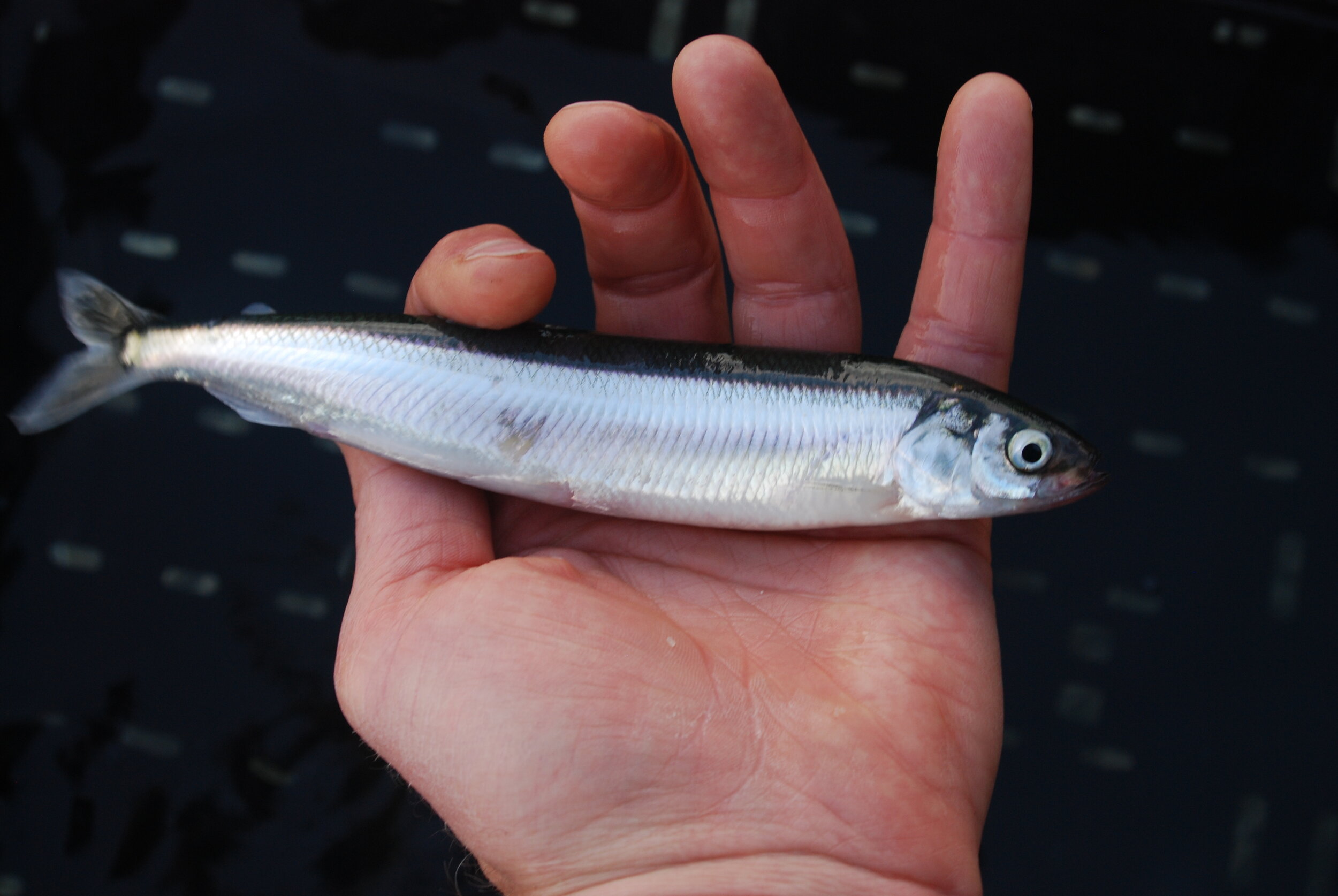SeaDoc Society is excited to fund a project that will study the effects of pollution on surf smelt embryos, which could not only improve conservation of the species, but also our ability to measure pollution in general.
Surf smelt are small fish that play a huge role in the food chain, serving as a key food source for sport fish, including the salmon that feed the endangered Southern Resident Killer Whales. Similar to other forage fish including Pacific herring and sand lance, surf smelt spawn near the shore in areas most vulnerable to land-based pollution.
The SeaDoc Society’s latest funded research project will focus on surf smelt habitat, which is being increasingly encroached upon by urban development. There are currently no monitoring methods for assessing the role of contaminants on the health of this important fish.
A team led by Dr. Louisa Harding of the Washington Department of Fish and Wildlife and Dr. John Incardona of the National Oceanic and Atmospheric Association is working to change that, and the results could go a long way toward measuring and understanding the threats to surf smelt’s increasingly developed spawning habitat.
“When surf smelt reproduce, they lay their eggs on the beach,” said Harding. “The beach is where sea meets the land, and we’re concerned that as beaches are more developed, there will be more pollution.”
Not only will the study yield information valuable to conservation of surf smelt as a crucial species, but it will help measure the effects of human-caused pollution on the intertidal zone as a whole, and identify where to direct future remediation efforts throughout Puget Sound.
Similar projects have been done for Pacific herring, another forage fish species that spawns in the lower intertidal and shallow subtidal zone—nearshore areas that remain consistently under water. Surf smelt embryos are released farther up the shore, in the upper intertidal zone. That means they are exposed when the tide goes out, presenting a unique challenge when it comes to outplanting and studying their embryos.
In the herring study, the embryos are deployed in protective underwater cages, which are later collected so exposure can be measured in a lab setting. Since surf smelt embryos don’t remain consistently underwater—they deposit their embryos in the rocks and gravel of the exposed shoreline—the cage design can be a bit more tricky.
Broadly speaking, researchers will bind the embryos to a fine mesh net, which will be encased in a grated cage so that water can still flow in and out but the embryos on the mesh are protected so that they don’t become a predator “snack bar,” as Harding puts it.
“To look at their health, we have to bring them back to the lab and hatch them so we can run tests,” said Incardona. “That’s the sequence. We outplant the caged embryos, then come back in 8-to-12 days and pull them.”
They will do the initial outplanting on a clean beach, with the goal of maintaining healthy embryos throughout the process. Once that method is established, they’ll replicate the process on developed beaches that are more susceptible to pollution.
Joe Gaydos, SeaDoc’s Science Director said, “Our science advisors, who help select SeaDoc’s funded science projects, loved this study. Surf smelt are so important, but their choice of spawning location leaves them vulnerable to pollution. This study could be a game changer in how we understand the role of pollution on their reproduction and also guide us on how to mitigate that.”

